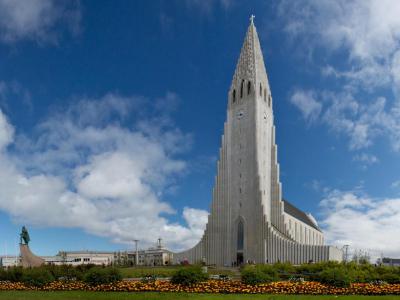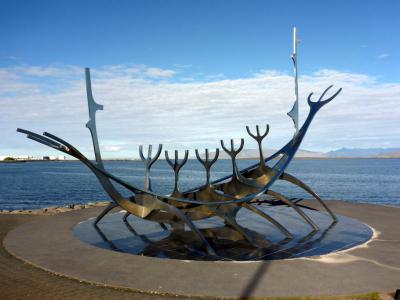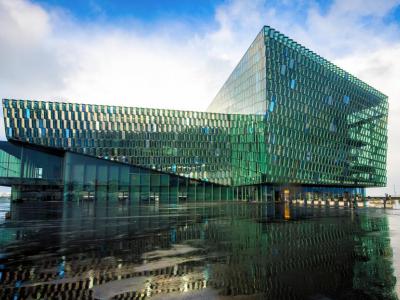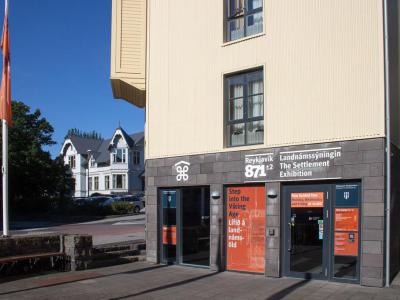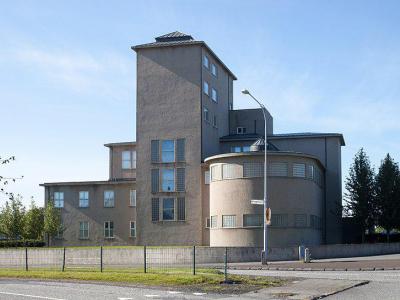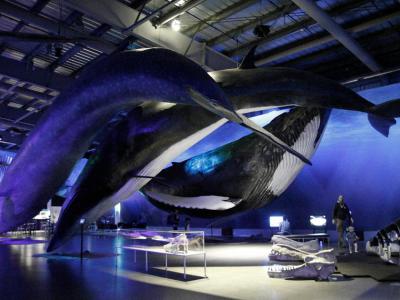Custom Walk in Reykjavik, Iceland by mcclurejlnl_3f673 created on 2025-04-14
Guide Location: Iceland » Reykjavik
Guide Type: Custom Walk
# of Sights: 6
Tour Duration: 2 Hour(s)
Travel Distance: 4.7 Km or 2.9 Miles
Share Key: AU4QY
Guide Type: Custom Walk
# of Sights: 6
Tour Duration: 2 Hour(s)
Travel Distance: 4.7 Km or 2.9 Miles
Share Key: AU4QY
How It Works
Please retrieve this walk in the GPSmyCity app. Once done, the app will guide you from one tour stop to the next as if you had a personal tour guide. If you created the walk on this website or come to the page via a link, please follow the instructions below to retrieve the walk in the app.
Retrieve This Walk in App
Step 1. Download the app "GPSmyCity: Walks in 1K+ Cities" on Apple App Store or Google Play Store.
Step 2. In the GPSmyCity app, download(or launch) the guide "Reykjavik Map and Walking Tours".
Step 3. Tap the menu button located at upper right corner of the "Walks" screen and select "Retrieve custom walk". Enter the share key: AU4QY
1) Hallgrímskirkja (Church of Hallgrímur) (must see)
Standing at 74 meters (244 feet) tall, the striking Church of Hallgrímur is Iceland's tallest church. Architect Guojon Samuelsson began drawing the church in 1937. Construction began in 1945 and was completed in 1986.
Iceland's unique geography inspired the design of the church. Volcanic action created lava flows which cooled into grey, hexagonal columns. The dramatic, cool, jagged columns inspired the design of the Church of Hallgrímur.
The church was named after 17th-century clergyman and poet Hallgrimur Petursson. Hallgrimur Petursson was best known for his work Hymns of the Passion.
This iconic building is visible from many parts of Reykjavík. The Church of Hallgrímur is a Lutheran, or Church of Iceland establishment. Its impressive height was in part to compete with Landakot's Church, the Catholic Cathedral.
During the summer, visitors can enjoy concerts which run four days a week. Don't miss the incredible pipe organ that stands 15 meters (49 feet) tall. The pipe organ has electronic action; the pipes are remote from the pedal console. The organ has 5,275 pipes and has been featured in several recording albums.
Outside the entrance, visitors will find a statue of Leif Eriksson, a famed explorer. The United States gave the statue to Iceland in the 1930s to commemorate the 1,000th anniversary of the Icelandic Parliament. The Icelandic Parliament was first convened in the year 930 AD.
The large clock on the tower is often wrong, as strong Icelandic wind gusts often blow the hands about.
Why You Should Visit:
The Church of Hallgrímur is a dramatic church that wonderfully emulates Iceland's landscape. You will see the church's tower from all over the city and find the church even more impressive up close. The interior is surprisingly austere with clean lines.
Tips:
Admission is free, but a small fee provides access to a lift to the top of the building, where visitors can enjoy panoramic views of Reykjavik and the surrounding mountains.
Iceland's unique geography inspired the design of the church. Volcanic action created lava flows which cooled into grey, hexagonal columns. The dramatic, cool, jagged columns inspired the design of the Church of Hallgrímur.
The church was named after 17th-century clergyman and poet Hallgrimur Petursson. Hallgrimur Petursson was best known for his work Hymns of the Passion.
This iconic building is visible from many parts of Reykjavík. The Church of Hallgrímur is a Lutheran, or Church of Iceland establishment. Its impressive height was in part to compete with Landakot's Church, the Catholic Cathedral.
During the summer, visitors can enjoy concerts which run four days a week. Don't miss the incredible pipe organ that stands 15 meters (49 feet) tall. The pipe organ has electronic action; the pipes are remote from the pedal console. The organ has 5,275 pipes and has been featured in several recording albums.
Outside the entrance, visitors will find a statue of Leif Eriksson, a famed explorer. The United States gave the statue to Iceland in the 1930s to commemorate the 1,000th anniversary of the Icelandic Parliament. The Icelandic Parliament was first convened in the year 930 AD.
The large clock on the tower is often wrong, as strong Icelandic wind gusts often blow the hands about.
Why You Should Visit:
The Church of Hallgrímur is a dramatic church that wonderfully emulates Iceland's landscape. You will see the church's tower from all over the city and find the church even more impressive up close. The interior is surprisingly austere with clean lines.
Tips:
Admission is free, but a small fee provides access to a lift to the top of the building, where visitors can enjoy panoramic views of Reykjavik and the surrounding mountains.
2) Sólfar (Sun Voyager) (must see)
Sun Voyager is a sculpture crafted by the artist Jón Gunnar Árnason (1931-1989) and is situated alongside the Sæbraut road in Reykjavík. This artistic creation is often characterized as a representation of either a dreamboat or an homage to the sun. Jón Gunnar Árnason's intention behind this sculpture was to convey a sense of promise associated with uncharted territories, a dream symbolizing hope, progress, and freedom.
In 1986, the west district association of Reykjavík decided to sponsor a competition to commission a new outdoor sculpture in commemoration of the 200th anniversary of the city. Jón Gunnar's Sun Voyager emerged as the winning design in the competition, leading to the creation of a scaled-up aluminum model, which was later presented to the city for enlargement. The full-sized Sun Voyager was officially unveiled on Sæbraut, coinciding with the birthday of Reykjavík on August 18, 1990.
The sculpture is crafted from high-quality stainless steel and is positioned upon a circle formed by granite slabs, encircled by a material known as "town-hall concrete." Its construction meticulously followed Jón Gunnar Árnason's detailed full-scale drawing of the Sun Voyager and was supervised by the artist Kristinn E. Hrafnsson, who served as Jón Gunnar's assistant.
Why You Should Visit:
Great subject for photographs as it provides a nice vantage point to look out into the waters and think of very deep things.
In 1986, the west district association of Reykjavík decided to sponsor a competition to commission a new outdoor sculpture in commemoration of the 200th anniversary of the city. Jón Gunnar's Sun Voyager emerged as the winning design in the competition, leading to the creation of a scaled-up aluminum model, which was later presented to the city for enlargement. The full-sized Sun Voyager was officially unveiled on Sæbraut, coinciding with the birthday of Reykjavík on August 18, 1990.
The sculpture is crafted from high-quality stainless steel and is positioned upon a circle formed by granite slabs, encircled by a material known as "town-hall concrete." Its construction meticulously followed Jón Gunnar Árnason's detailed full-scale drawing of the Sun Voyager and was supervised by the artist Kristinn E. Hrafnsson, who served as Jón Gunnar's assistant.
Why You Should Visit:
Great subject for photographs as it provides a nice vantage point to look out into the waters and think of very deep things.
3) Harpa Concert Hall and Conference Centre (must see)
Harpa Concert Hall and Conference Centre is a modern complex completed in 2011. It is the first purpose-built concert hall in Reykjavik. Harpa is home to the Iceland Symphony Orchestra and the Icelandic Opera's offices.
The modern building features different colored geometric-shaped glass panels over a steel framework.
The 1970 The Musician sculpture is located in the water next to Harpa. Icelandic sculptor Olof Palsdottir created the sculpture which shows a cellist playing. The statue used to be located at the previous home of the Iceland Symphony Orchestra, but it moved with the Orchestra to its new home.
The concert hall also hosts performances by the Icelandic Opera and the Reykjavik Big Band.
The building won the European Union's Mies van der Rohe Award for contemporary architecture in 2013. In addition, Harpa won the MICE Report Award for the best conference center in Northern Europe.
Harpa has appeared in the series Black Mirror and in an episode of the Netflix series Sense8. It hosts several regular shows such as How to Become Icelandic in 60 Minutes, Pearls of Icelandic Songs, Reykjavik Classics,and Bowie: The Session.
Harpa features modern architecture and is stunning at night.
The modern building features different colored geometric-shaped glass panels over a steel framework.
The 1970 The Musician sculpture is located in the water next to Harpa. Icelandic sculptor Olof Palsdottir created the sculpture which shows a cellist playing. The statue used to be located at the previous home of the Iceland Symphony Orchestra, but it moved with the Orchestra to its new home.
The concert hall also hosts performances by the Icelandic Opera and the Reykjavik Big Band.
The building won the European Union's Mies van der Rohe Award for contemporary architecture in 2013. In addition, Harpa won the MICE Report Award for the best conference center in Northern Europe.
Harpa has appeared in the series Black Mirror and in an episode of the Netflix series Sense8. It hosts several regular shows such as How to Become Icelandic in 60 Minutes, Pearls of Icelandic Songs, Reykjavik Classics,and Bowie: The Session.
Harpa features modern architecture and is stunning at night.
4) The Settlement Exhibition (must see)
The Settlement Exhibition Reykjavík 871±2 is a showcase dedicated to the early history of Reykjavík, curated by the Reykjavik City Museum. This exhibition draws its content from the results of archaeological excavations conducted on the remains of one of the earliest houses in Iceland, along with discoveries from other dig sites within the city center.
The main focus of this exhibit revolves around the remnants of a hall from the Settlement Age, unearthed during excavations in 2001. This hall was inhabited from approximately 930 to 1000 AD. Adjacent to the hall, there are two pieces of turf that are remnants of a wall constructed prior to the year 871±2, hence the exhibition's name. This precise dating is made possible by analyzing the fallout of volcanic ash from a significant eruption in the Torfajökull area, which left its mark across the region. Researchers can accurately date this event by studying glacial ice in Greenland. Notably, this hall ranks among the oldest human-made structures discovered in Iceland. The exhibit also showcases artifacts from the Viking Age that were uncovered in central Reykjavík and on the island of Viðey.
The main focus of this exhibit revolves around the remnants of a hall from the Settlement Age, unearthed during excavations in 2001. This hall was inhabited from approximately 930 to 1000 AD. Adjacent to the hall, there are two pieces of turf that are remnants of a wall constructed prior to the year 871±2, hence the exhibition's name. This precise dating is made possible by analyzing the fallout of volcanic ash from a significant eruption in the Torfajökull area, which left its mark across the region. Researchers can accurately date this event by studying glacial ice in Greenland. Notably, this hall ranks among the oldest human-made structures discovered in Iceland. The exhibit also showcases artifacts from the Viking Age that were uncovered in central Reykjavík and on the island of Viðey.
5) National Museum of Iceland (must see)
The National Museum of Iceland was founded on February 24, 1863, and its first curator was Jón Árnason. This museum housed the Icelandic collection, which had previously been kept in Danish museums. The second curator, Sigurður Guðmundsson, pushed for the establishment of an antiquarian collection. Initially, the museum was known as the Antiquarian Collection, but in 1911, its name was changed to the National Museum of Iceland. It didn't have a permanent location until 1950 when it moved to Suðurgata. Prior to that, it was located in various attics in Reykjavík, including the Culture House attic, where it stayed for 40 years.
The museum's permanent exhibition focuses on Icelandic history and boasts approximately 2,000 artifacts. One standout piece in this exhibition is the Valþjófsstaður door, which features a famous carving depicting a version of the Lion-Knight legend. In this legend, a knight defeats a dragon, ultimately freeing a lion that becomes his loyal companion.
The National Museum of Iceland provides a comprehensive look at Iceland's history, spanning from ancient times to the present day, presented in an engaging and visually appealing manner. The museum's collection includes Viking weaponry, sailing vessels, clothing, religious artifacts, and even a recreated Icelandic house. For those interested in more recent history, there is a collection of modern items, including a copy of Bjork's very first album, recorded when she was just 11 years old. Visitors can also have some fun in the costume room, where they can try on clothing from different periods in Icelandic history.
Tip:
Free entry included with Reykjavik City Card; there are free lockers; set aside 1.5-2.5 hours here.
There are free guided tours at 11am each Saturday, and it is recommended that you join one of these tours to gain a better understanding.
The museum's permanent exhibition focuses on Icelandic history and boasts approximately 2,000 artifacts. One standout piece in this exhibition is the Valþjófsstaður door, which features a famous carving depicting a version of the Lion-Knight legend. In this legend, a knight defeats a dragon, ultimately freeing a lion that becomes his loyal companion.
The National Museum of Iceland provides a comprehensive look at Iceland's history, spanning from ancient times to the present day, presented in an engaging and visually appealing manner. The museum's collection includes Viking weaponry, sailing vessels, clothing, religious artifacts, and even a recreated Icelandic house. For those interested in more recent history, there is a collection of modern items, including a copy of Bjork's very first album, recorded when she was just 11 years old. Visitors can also have some fun in the costume room, where they can try on clothing from different periods in Icelandic history.
Tip:
Free entry included with Reykjavik City Card; there are free lockers; set aside 1.5-2.5 hours here.
There are free guided tours at 11am each Saturday, and it is recommended that you join one of these tours to gain a better understanding.
6) Whales of Iceland Exhibition (must see)
The Whales of Iceland Exhibition offers visitors a chance to get up close with 23 full-sized manufactured whale models. These whale models represent the 23 whale species found in Icelandic waters. Visitors can marvel at the 25 meters (82 foot) long Blue Whale. The critically endangered Atlantic Right Whale model and a full-size Sperm Whale are also on display. The models are soft and squishy, and guests are permitted to touch the models.
Interactive stands encourage visitors of all ages to find out more about these majestic mammals. The museum features relaxing whale sounds and gentle ambient lighting to represent the ocean environment. The black and yellow floor represents Iceland's beaches.
Guests can truly immerse themselves in the under the sea experience with virtual reality glasses. You will feel like you are walking along the seafloor while admiring the biggest whales. As you explore the underwater world using VR glasses, you'll also be learning about the various whale species.
Visitors can download an audio tour in English, German, or Icelandic. There are also daily guided tours offered at no additional cost.
Interactive stands encourage visitors of all ages to find out more about these majestic mammals. The museum features relaxing whale sounds and gentle ambient lighting to represent the ocean environment. The black and yellow floor represents Iceland's beaches.
Guests can truly immerse themselves in the under the sea experience with virtual reality glasses. You will feel like you are walking along the seafloor while admiring the biggest whales. As you explore the underwater world using VR glasses, you'll also be learning about the various whale species.
Visitors can download an audio tour in English, German, or Icelandic. There are also daily guided tours offered at no additional cost.
